A minimalist living room is more than just a well-decorated space; it’s a carefully planned refuge that invites reflection and relaxation. The principles of minimalism allow you to transform your living room into a place of simplicity and harmony that reflects your personality, where clutter is replaced by order, bringing a sense of well-being and coziness. Let’s explore some essential tips to create a minimalist living room that meets both aesthetic and emotional or spiritual needs.
1. Start with a Neutral Color Palette
When designing a minimalist living room, choosing the right color palette plays a crucial role in creating the desired atmosphere. It’s important to opt for neutral tones like white, beige, gray, and earthy shades. These colors bring a sense of spaciousness and brightness and establish a serene and balanced base for the space. In the pursuit of simplicity and elegance, the use of neutral colors is an obvious choice for minimalists.
White, in particular, is often chosen for its ability to reflect light and create a sense of a large, airy space. Additionally, it’s easy to combine with other colors and tends to be more affordable, offering good cost-benefit. Beige and gray provide a neutral base that can be easily complemented with a few decorative elements.
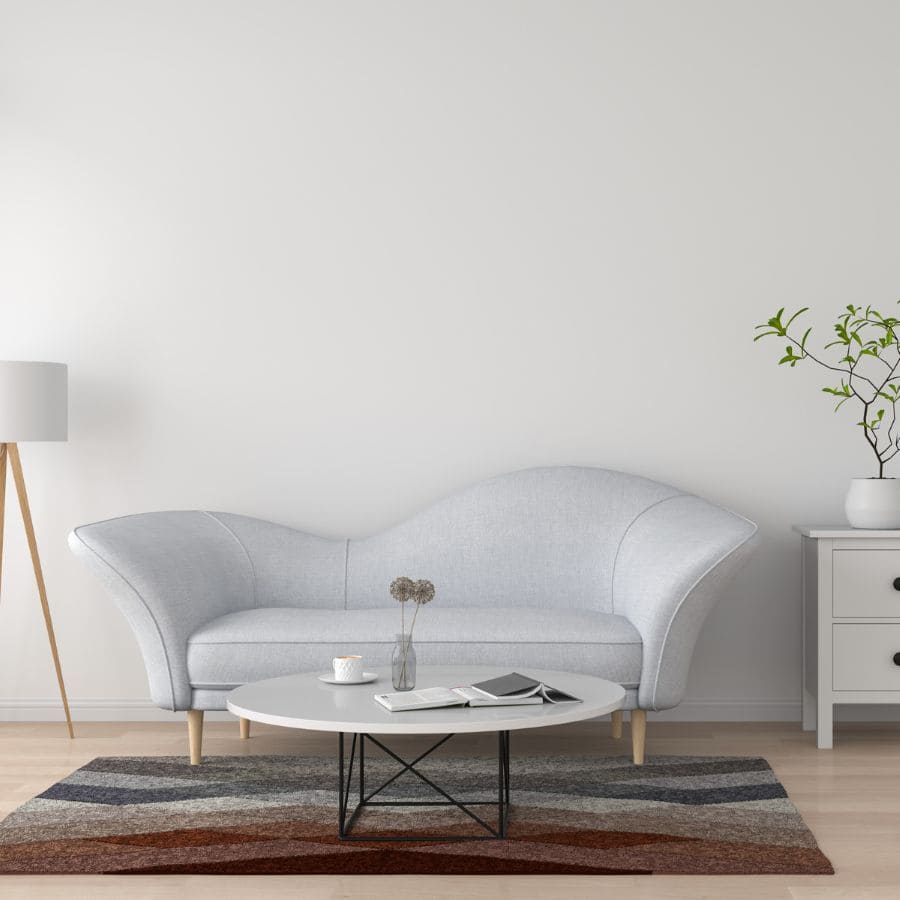
In a minimalist living room, where the emphasis is on simplicity and reducing excess, a neutral color palette helps create a calm and uncluttered environment. This visual tranquility is essential to allow the essential elements of the space to stand out. Therefore, when starting the design process of a minimalist living room, it’s crucial to begin with a neutral color palette, as this choice will dictate the rest of the decor. With a solid base of neutral tones, you can build a minimalist living room that inspires calm, clarity, and harmony in every detail.
2. Choose Simple and Functional Furniture
When it comes to creating a minimalist living room, the choice of furniture plays a fundamental role in defining the style and functionality of the space. Simple and functional furniture is essential to maintain the minimalist aesthetic and ensure that the environment is both practical and elegant.
When selecting furniture for the minimalist living room, prioritize simplicity and utility. Avoid bulky pieces or elaborate designs, as these tend to overwhelm the space and create a visually cluttered atmosphere. Instead, opt for straight and clean lines that contribute to a sense of order and harmony. In a minimalist living room, sofas, coffee tables, and shelves typically feature simple shapes without unnecessary details, making them perfect for creating an uncomplicated and elegant environment. Additionally, their functionality is often maximized, offering smart storage solutions and optimizing the available space in the best possible way.
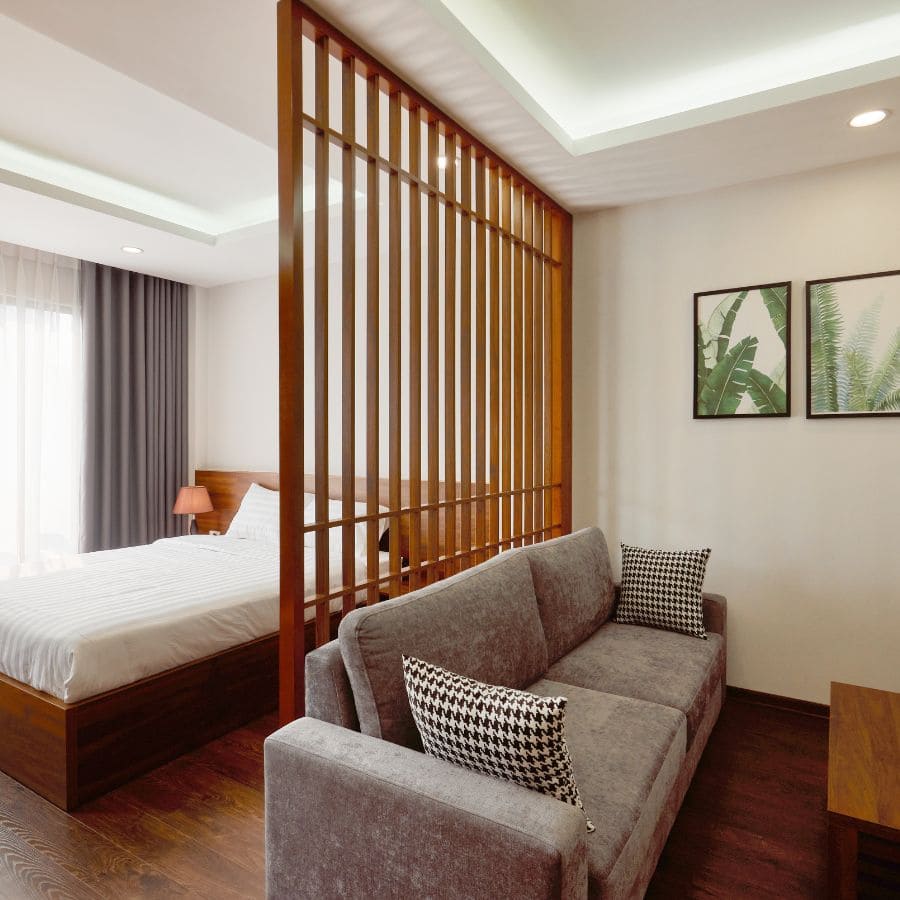
When choosing furniture for the minimalist living room, consider the style, quality, and durability of the pieces. Prefer pieces made of high-quality materials to ensure the longevity of the environment. These details reflect the minimalist aesthetic and also the lifestyle of conscious and sustainable consumption.
3. Keep Order Under Control
In a minimalist living room, maintaining order and organization is essential to create an environment that conveys calm and clarity. One of the fundamental principles of minimalism is eliminating excess, which applies especially to physical clutter in the space.
To achieve this goal, it’s important to keep order under control and get rid of unnecessary items. An effective strategy to maintain everything in order in a minimalist living room is to adopt smart storage solutions. Use baskets, organizing boxes, and shelves as resources to help keep items out of sight and out of the way, creating a sense of order and tranquility in the environment.
In addition to investing in storage solutions, it’s important to cultivate a mindset of simplicity and detachment. This means regularly evaluating the items in the living room and getting rid of those that are not essential for the comfort and well-being of the people who use the room. By doing so, you’ll create a cleaner space, allowing the important elements of the room to stand out.
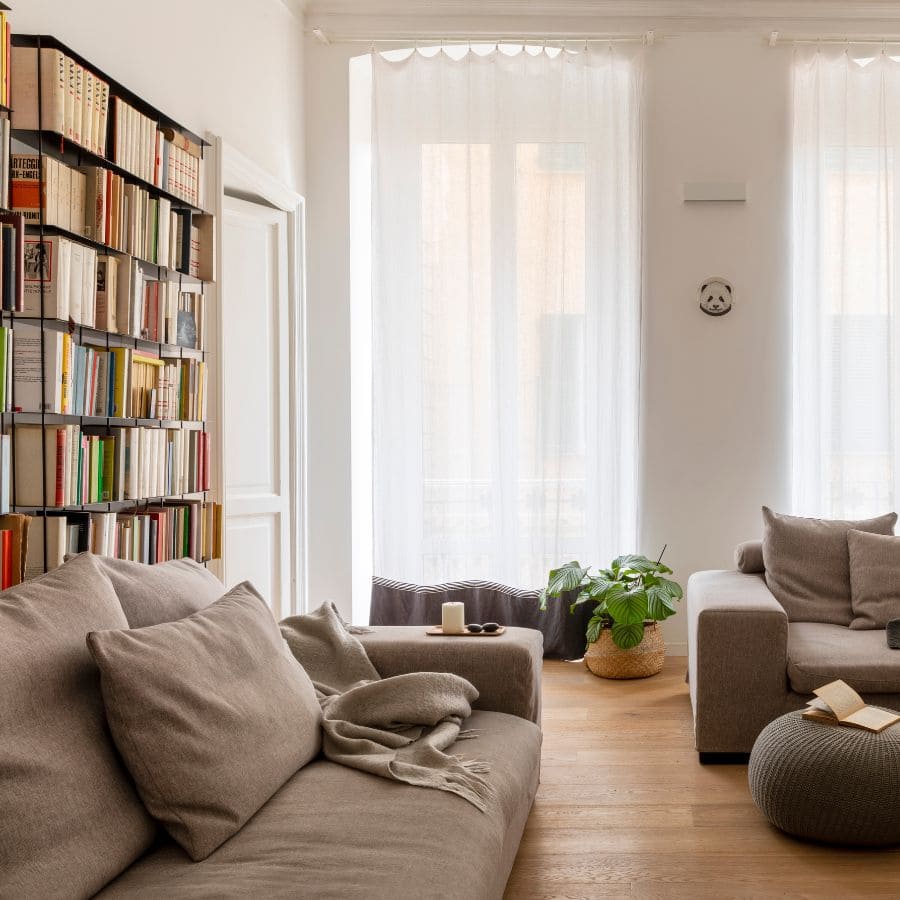
Keeping order under control in a minimalist living room is not just a matter of aesthetics; it’s also about cultivating a more conscious and intentional lifestyle. By eliminating excess and simplifying the space around you, you’ll create an environment that promotes mental calm and clarity, allowing for greater concentration and presence.
4. Add Touches of Green with Plants
Introducing natural elements, like plants, into a minimalist living room can be a great way to add life and color to the environment without compromising the minimalist aesthetic. Plants provide a touch of green and originality and play a crucial role in creating a relaxing atmosphere.
When selecting plants for the minimalist living room, choose varieties that are easy to maintain and adapt well to indoor environments. Succulents, for example, are a popular choice due to their resilient nature and minimal care requirements. Ferns are also an interesting option, providing a sense of lushness while purifying the air.
Strategically positioning plants around the space can help visually balance the minimalist living room and create a sense of harmony between natural elements and furniture. Place plants where they can receive adequate sunlight and avoid overcrowding the space with too many plants. The focus is on maintaining simplicity and visual balance.
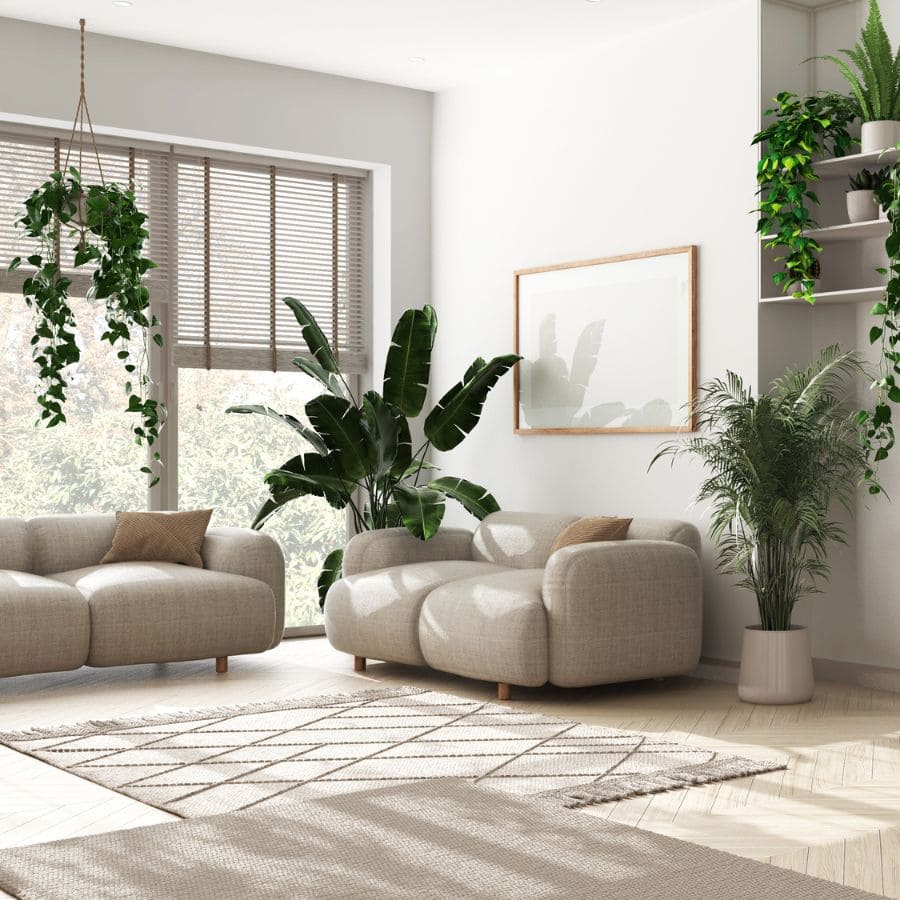
Besides contributing to the aesthetic of the environment, plants offer health and well-being benefits. Studies show that the presence of plants in indoor spaces can help purify the air, increase humidity, and even reduce stress. Therefore, by adding touches of green to the minimalist living room, you’ll enhance the aesthetics and create an environment that promotes overall comfort and well-being.
5. Illuminate with Natural Light
In the quest for a tranquil and uncomplicated atmosphere in a minimalist living room, lighting plays a fundamental role. Maximizing natural light is essential to create a space that is both bright and welcoming.
Keep windows unobstructed and use light and translucent curtains to allow natural light to enter, highlighting the beauty of the essential elements of the environment during the day. Natural light is the best ally of a minimalist living room; it illuminates the space softly and evenly and highlights the simplicity and elegance of the furniture and objects. Moreover, natural light has the power to create a sense of connection with nature, reinforcing the harmony of the environment.
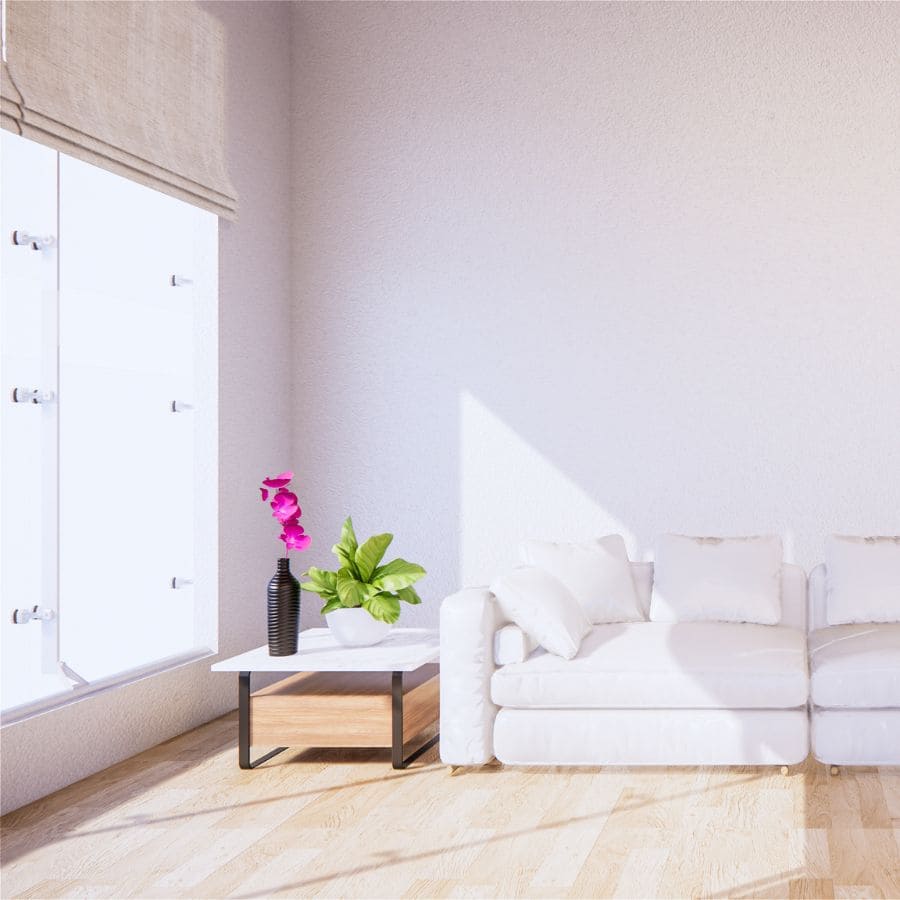
At night, it’s important to maintain the same serene and relaxing atmosphere. Opt for soft and indirect lighting, using floor lamps or table lamps to create light points that contribute to a cozy ambiance. Avoid bright, white, and direct lights, as these can interfere with the sense of calm, tranquility, and coziness that characterizes a minimalist living room. Choose lighting fixtures that complement the minimalist style of the space and avoid excess light points. This will create an environment that is both visually appealing and cozy, perfect for relaxing and enjoying moments of tranquility at home.
Conclusion
Creating a minimalist living room goes beyond simply choosing furniture and colors; it is a quest for a simpler and more conscious lifestyle. By following the tips presented in this post, you can transform your living room into a tranquil retreat that conveys calm, clarity, and well-being. By eliminating excess and prioritizing the essential, you’ll create a space that reflects the simplicity and beauty of minimalism.
Therefore, when designing a minimalist living room, don’t be afraid to simplify and detach. Focus on what truly matters and create an environment that invites people to slow down, relax, and recharge. A minimalist living room can become a haven of tranquility and coziness amidst the chaos of modern life.
Frequently Asked Questions
What is a minimalist living room? A minimalist living room is a space characterized by simplicity, functionality, and the absence of unnecessary elements. It aims to create an atmosphere of calm and clarity through the reduction of excess.
How to make a living room minimalist? To make a living room minimalist, it’s important to prioritize simplification and organization. Get rid of unnecessary items, opt for simple and functional furniture, maintain a neutral color palette, and use smart storage solutions to keep the place orderly.
How to create a minimalist environment? Creating a minimalist environment involves carefully choosing furniture and accessories, eliminating excess, and prioritizing functionality and clean aesthetics. It’s essential to create an atmosphere of tranquility and order, keeping only what is necessary for daily activities.
What is minimalist decor? Minimalist decor is characterized by simplicity, harmony, and functionality. It focuses on using only essential elements to create an elegant and uncomplicated space, free of unnecessary items, with a clean and refined aesthetic.
What is a minimalist space? A minimalist space follows the principles of minimalism, characterized by simplicity, organization, and the absence of superfluous elements. It promotes calm, clarity, and well-being by emphasizing the essential and careful organization.
How to make your home minimalist? To make your home minimalist, simplify each room by eliminating unnecessary items, opting for simple and functional furniture, and maintaining a neutral color palette. Additionally, keep order under control to create a tranquil atmosphere.
What are minimalist colors? Minimalist colors are soft, neutral, and discreet, such as white, black, gray, beige, and earthy tones. They are often used in minimalist environments to create a calm, simple, and elegant atmosphere.
How to use minimalism in decor? To use minimalism in decor, simplify the environment, choose furniture and accessories with clean, simple lines, maintain a neutral color palette, and use smart storage solutions to keep order under control. The goal is to create a simple, elegant, and uncomplicated space, free of superfluous elements.
What is the minimalist style? The minimalist style is a design movement focused on reducing excess and simplifying elements. It values functionality, elegance, and harmony, creating spaces that promote calm, clarity, and well-being by emphasizing the essential and careful organization.








